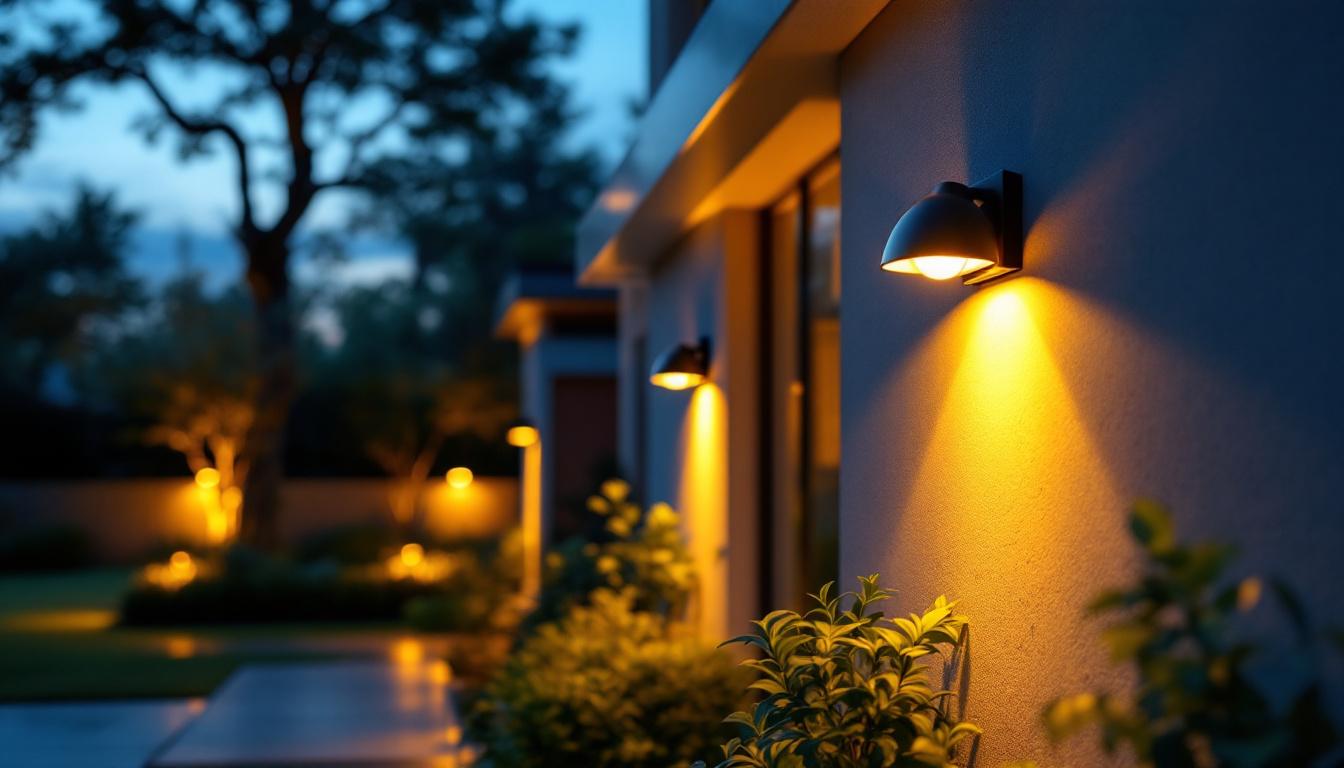
In the ever-evolving world of lighting design and installation, contractors face a myriad of challenges that require innovative solutions. Arthur’s Island Kitchen has emerged as a beacon of expertise, offering proven methods that can streamline processes and enhance the quality of work delivered by lighting contractors. This article delves into these methods, providing insights that can elevate the craft of lighting installation.
Before diving into advanced techniques, it is crucial for lighting contractors to grasp the fundamental principles of lighting design. This foundational knowledge not only aids in creating aesthetically pleasing environments but also ensures functionality and energy efficiency. A well-designed lighting scheme can transform a space, enhancing its usability and contributing to the overall experience of those who inhabit it. By understanding the interplay of light and shadow, contractors can manipulate perceptions of space, making areas feel larger or more intimate depending on the desired outcome.
Color temperature plays a significant role in how light is perceived in a space. Measured in Kelvin (K), it ranges from warm (around 2700K) to cool (upwards of 5000K). Understanding the desired mood of a space can guide contractors in selecting the appropriate color temperature. For instance, warmer lights are often preferred in residential settings to create a cozy atmosphere, while cooler lights are suitable for commercial spaces that require a more energetic vibe. Additionally, the choice of color temperature can influence not only the ambiance but also the functionality of the space; for example, cooler temperatures can enhance concentration in work environments, while warmer tones can promote relaxation in living areas.
Another critical aspect is light distribution, which refers to how light is spread across a surface. The beam angle of a fixture determines this distribution. A narrow beam angle is ideal for highlighting specific features, while a wider beam angle is better for general illumination. Contractors should consider the intended use of the space and choose fixtures that provide the right balance of focused and ambient lighting. Furthermore, understanding the concept of layering light—using a combination of ambient, task, and accent lighting—can significantly enhance the functionality and aesthetic appeal of a space. By strategically placing fixtures to create layers, contractors can achieve a dynamic lighting design that adapts to various activities and moods throughout the day.
With a solid understanding of lighting design principles, contractors can explore innovative installation techniques that enhance efficiency and effectiveness. These methods not only save time but also improve the overall quality of the installation process. By adopting a forward-thinking approach, contractors can stay ahead of industry trends and meet the evolving needs of their clients, ensuring that every project is executed with precision and creativity.
The integration of smart technology into lighting systems has transformed the industry. Smart lighting solutions allow for remote control, automation, and customization, making them highly desirable for both residential and commercial projects. Contractors should familiarize themselves with various smart lighting products and systems, ensuring they can offer clients the latest in convenience and energy efficiency. Additionally, the ability to integrate these systems with other smart home technologies, such as security systems and climate control, provides an added layer of appeal. This interconnectedness not only enhances user experience but also promotes energy conservation, as clients can monitor and adjust their lighting usage in real-time.
Modular lighting systems provide flexibility in design and installation. These systems consist of interchangeable components that can be easily adapted to fit different spaces and requirements. By utilizing modular systems, contractors can streamline their installation processes and reduce waste, ultimately leading to cost savings for both themselves and their clients. Furthermore, the adaptability of modular systems allows for easy upgrades and modifications, enabling clients to refresh their lighting designs without the need for a complete overhaul. This not only extends the lifespan of the installation but also aligns with sustainable practices, as it minimizes the environmental impact associated with disposing of outdated fixtures.
Moreover, modular systems can be particularly beneficial in commercial settings where the layout may frequently change. For instance, in office spaces that require reconfiguration for team collaboration or events, modular lighting can be adjusted to meet varying needs. This capability enhances the functionality of the space while ensuring that the lighting remains effective and aesthetically pleasing. As contractors become more adept at implementing these innovative solutions, they will find themselves better positioned to tackle diverse projects and exceed client expectations.
Effective communication with clients is paramount for lighting contractors. Establishing clear lines of communication can prevent misunderstandings and ensure that the project aligns with the client’s vision. Here are some best practices to consider.
From the outset, it is essential to set clear expectations regarding timelines, budgets, and deliverables. Providing clients with a detailed project plan can help manage their expectations and foster trust. Regular updates throughout the project can also keep clients informed and engaged, reducing anxiety and uncertainty.
Encouraging client feedback during the design and installation phases can lead to a more satisfactory outcome. By actively seeking input, contractors can make adjustments that align with the client’s preferences, resulting in a finished product that meets or exceeds their expectations. This collaborative approach not only enhances client satisfaction but can also lead to referrals and repeat business.
As the demand for energy-efficient solutions continues to rise, lighting contractors must prioritize sustainability in their projects. Implementing energy-efficient practices not only benefits the environment but also appeals to eco-conscious clients.
When selecting lighting fixtures, contractors should prioritize energy-efficient options such as LED lights. These fixtures consume significantly less energy than traditional incandescent bulbs and have a longer lifespan, resulting in lower maintenance costs. Educating clients about the benefits of energy-efficient lighting can also help them make informed decisions that align with their sustainability goals.
Maximizing the use of natural light is another effective strategy for enhancing energy efficiency. By designing spaces that take advantage of windows, skylights, and reflective surfaces, contractors can reduce reliance on artificial lighting during daylight hours. This not only lowers energy consumption but also creates a healthier and more pleasant environment for occupants.
In an industry that is constantly evolving, lighting contractors must commit to ongoing education and professional development. Staying informed about the latest trends, technologies, and best practices is crucial for maintaining a competitive edge.
Attending workshops and seminars can provide valuable insights into new techniques and technologies. These events often feature industry experts who share their knowledge and experiences, offering contractors the opportunity to learn from the best. Additionally, networking with peers can lead to collaborations and partnerships that enhance business opportunities.
With the rise of online learning platforms, contractors can access a wealth of resources from the comfort of their homes or offices. Many organizations offer courses on lighting design, installation techniques, and energy efficiency, allowing contractors to tailor their learning to their specific needs and interests. Embracing these resources can lead to improved skills and knowledge in the field.
A well-curated portfolio is an essential tool for lighting contractors. It serves as a visual representation of their work and can significantly influence potential clients’ decisions. Here are some strategies for building a compelling portfolio.
Including a variety of projects in a portfolio can demonstrate versatility and expertise. Contractors should aim to showcase different types of installations, from residential to commercial, and highlight various lighting styles and techniques. This diversity not only attracts a broader client base but also showcases the contractor’s ability to adapt to different design challenges.
Investing in high-quality photography is crucial for presenting a portfolio that stands out. Professional images can capture the nuances of lighting design, showcasing how light interacts with different materials and spaces. Clear, well-lit photographs can evoke emotion and draw potential clients in, making them more likely to engage with the contractor’s services.
In today’s digital age, a strong online presence is vital for lighting contractors. Utilizing social media platforms and maintaining an engaging website can significantly enhance visibility and attract new clients.
Creating engaging content, such as blog posts, videos, and tutorials, can position contractors as thought leaders in the industry. Sharing insights on lighting design trends, energy efficiency tips, and installation techniques can attract followers and build a loyal audience. Additionally, showcasing completed projects on social media can provide real-time updates and inspire potential clients.
Encouraging satisfied clients to leave reviews and testimonials can enhance credibility and attract new business. Positive feedback serves as social proof, reassuring potential clients of the contractor’s expertise and reliability. Displaying these testimonials prominently on a website or social media page can significantly influence a client’s decision-making process.
Arthur’s Island Kitchen has established itself as a leader in providing proven methods for lighting contractors. By understanding the fundamentals of lighting design, implementing innovative installation techniques, prioritizing client communication, and embracing sustainability, contractors can elevate their work to new heights. Continuous education, a strong portfolio, and a robust online presence further contribute to success in this competitive industry.
As the lighting landscape continues to evolve, staying informed and adaptable will be key to thriving as a lighting contractor. By implementing these strategies, contractors can not only enhance their skills and services but also create lasting relationships with clients, ultimately leading to a successful and fulfilling career in lighting design and installation.
Ready to take your lighting projects to the next level? At LumenWholesale, we support your commitment to excellence by providing an unparalleled selection of spec-grade lighting products at wholesale prices. Say goodbye to local distributor markups and hello to our cost-effective, high-quality solutions that meet the strictest industry standards. With free shipping on bulk orders, you can trust that you’re getting premium lighting at the best value, with no hidden fees. Elevate your lighting installations today and discover the best in wholesale lighting with LumenWholesale.

Discover the ultimate guide for lighting professionals with “Wrap Light: The Essential Checklist.” Uncover expert tips, innovative techniques, and essential tools to elevate your lighting projects to the next level.

Discover why solar wall-mounted outdoor lights are becoming a must-have for lighting contractors.

Discover how solar post lamps can give lighting contractors a competitive edge in winning more bids.

Discover everything lighting contractors need to know about 2-inch LED can lights in just five minutes.